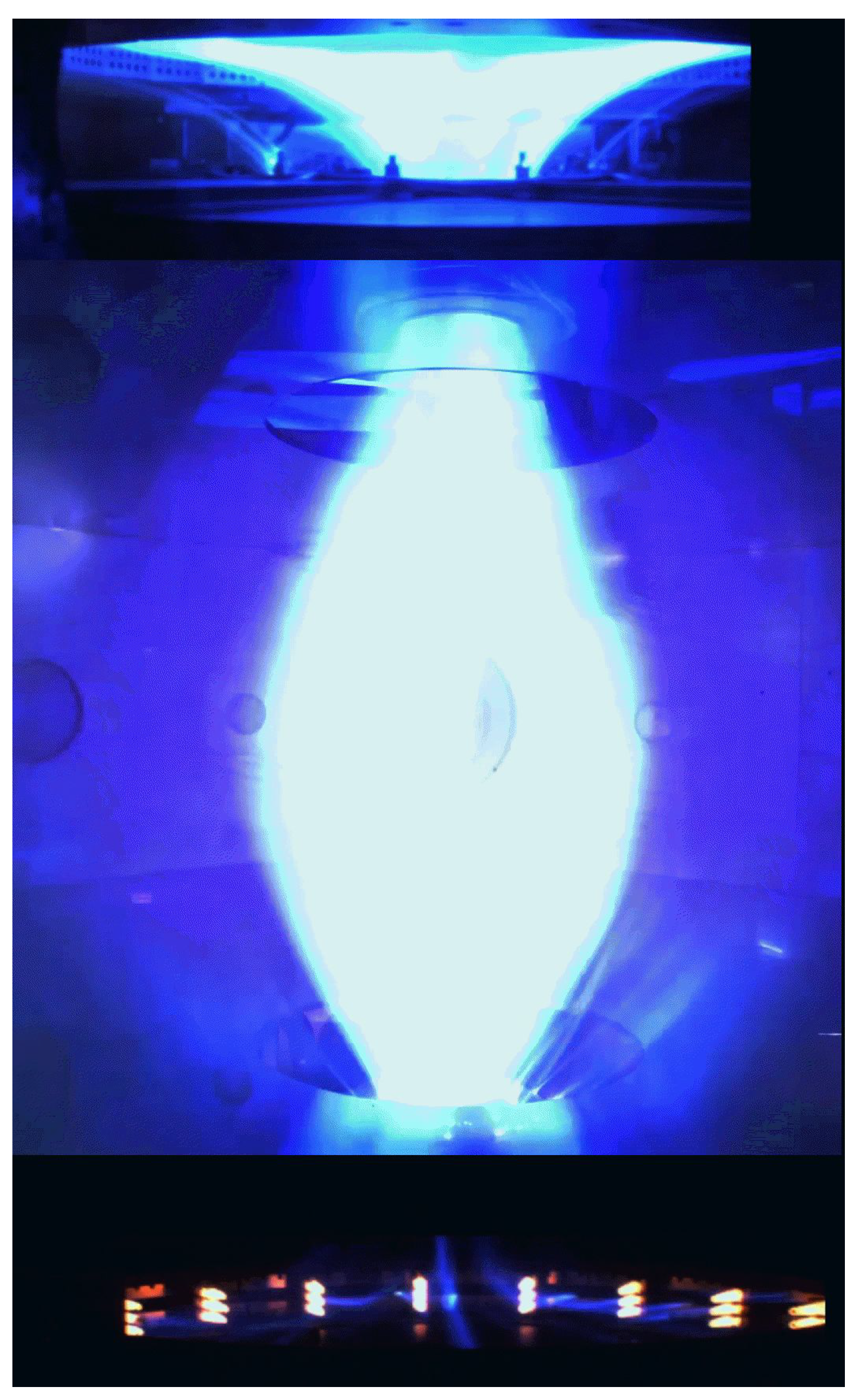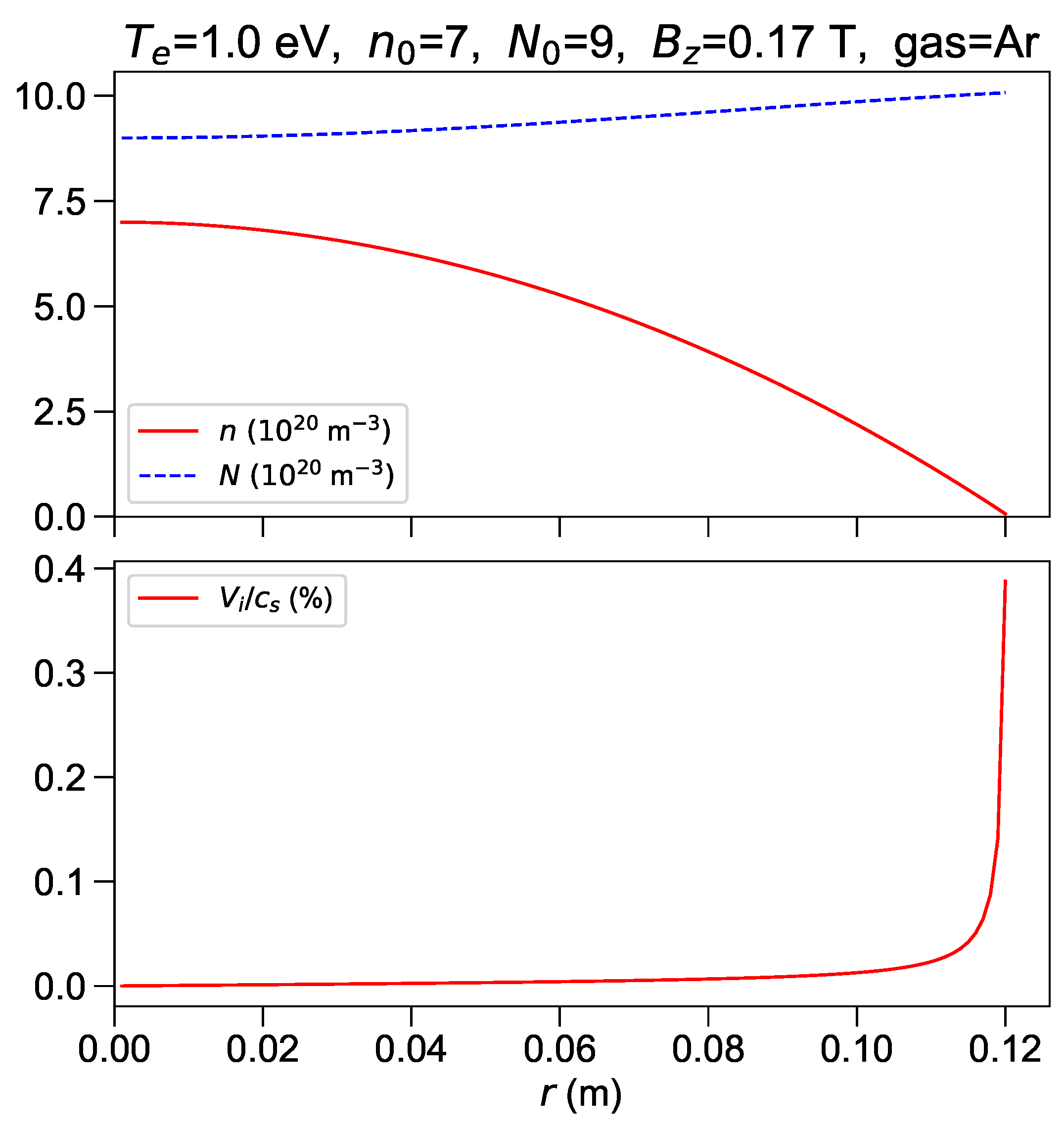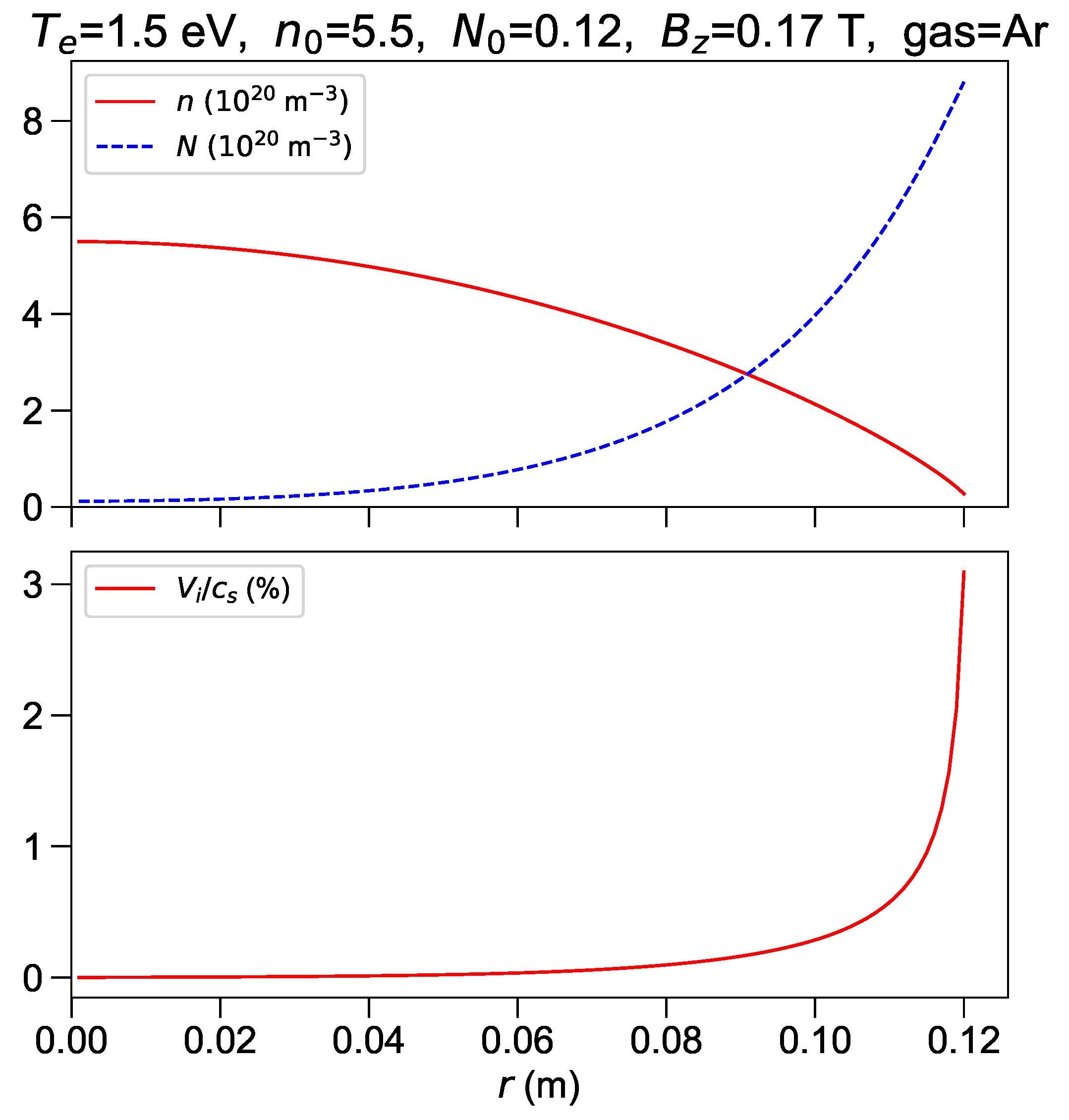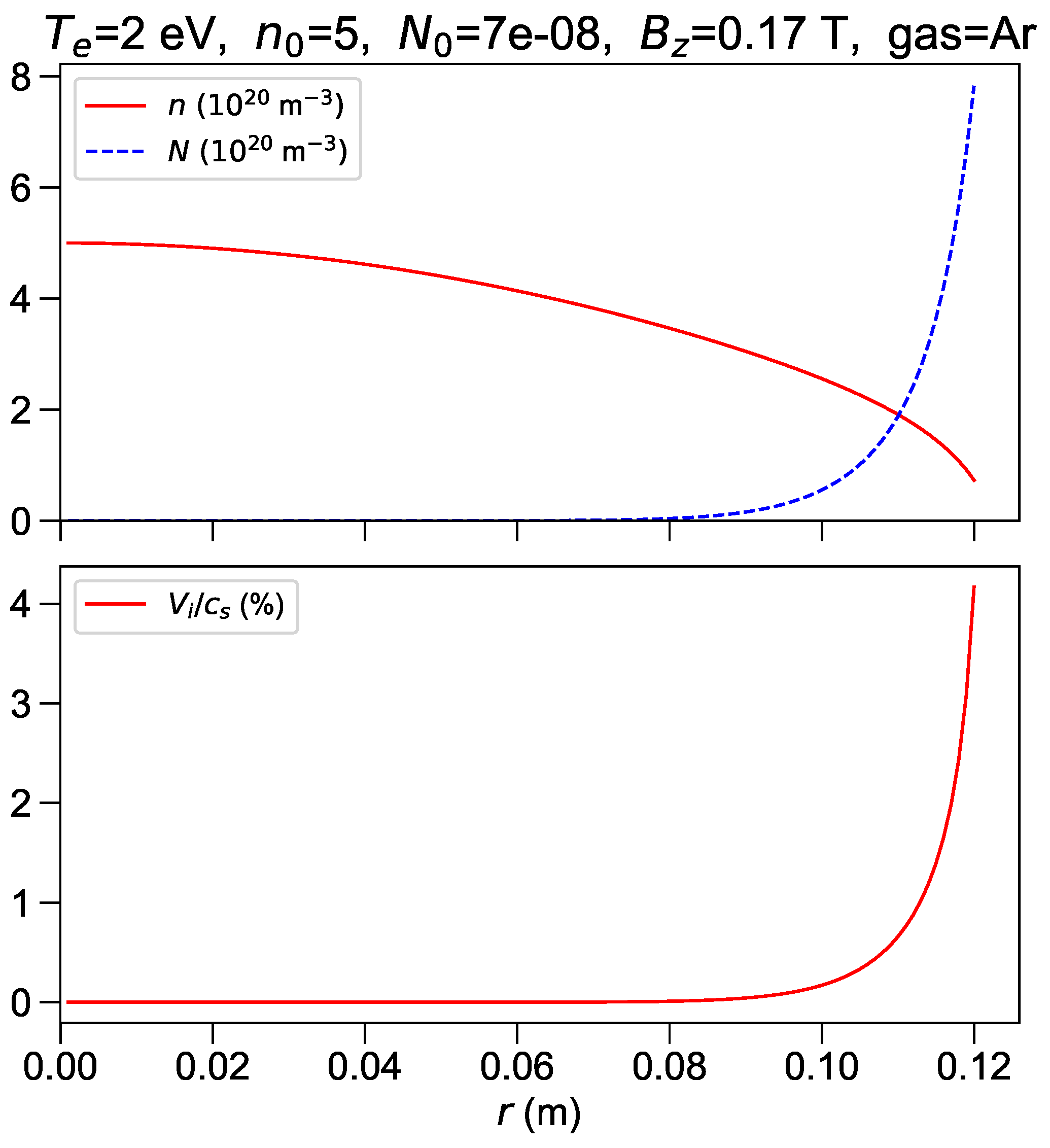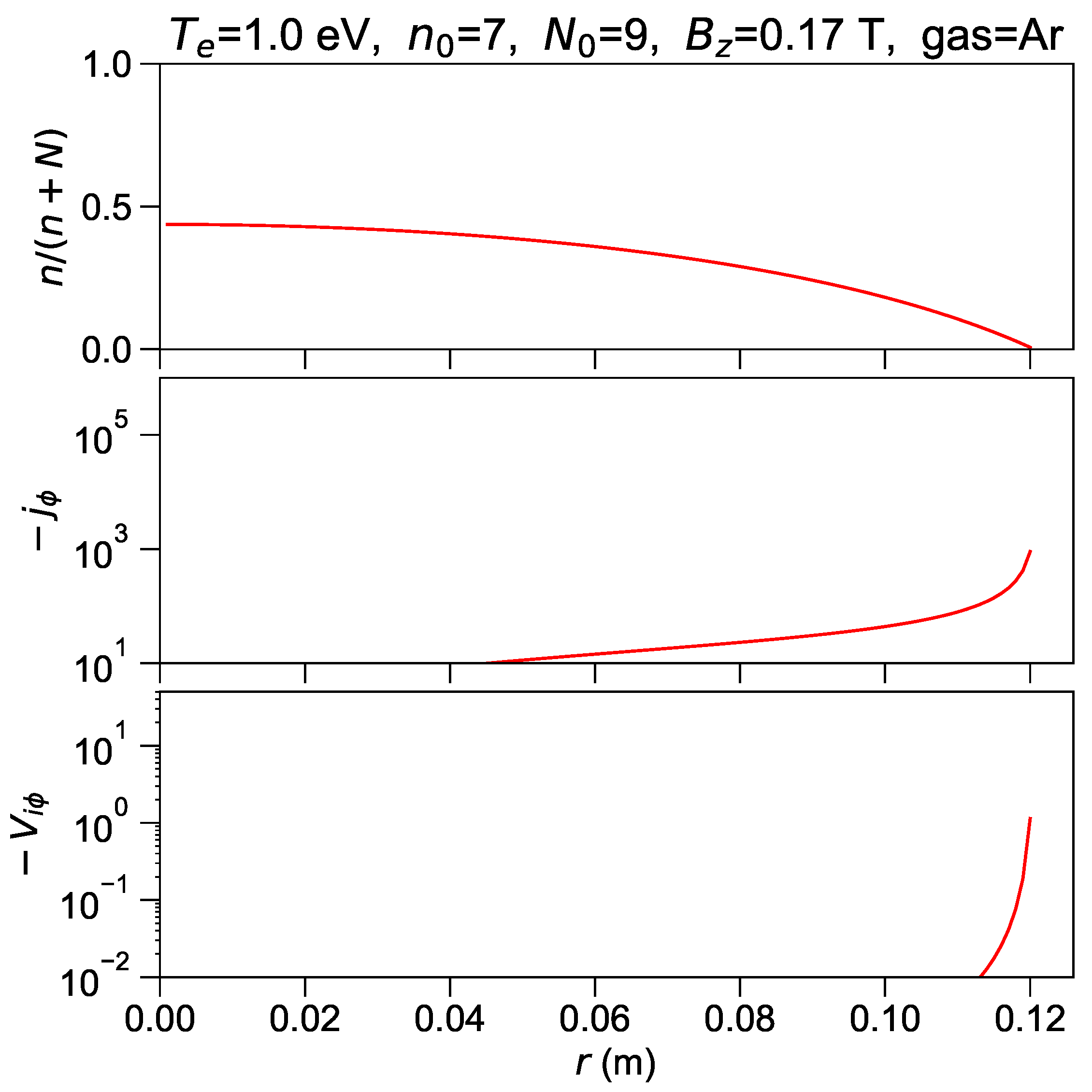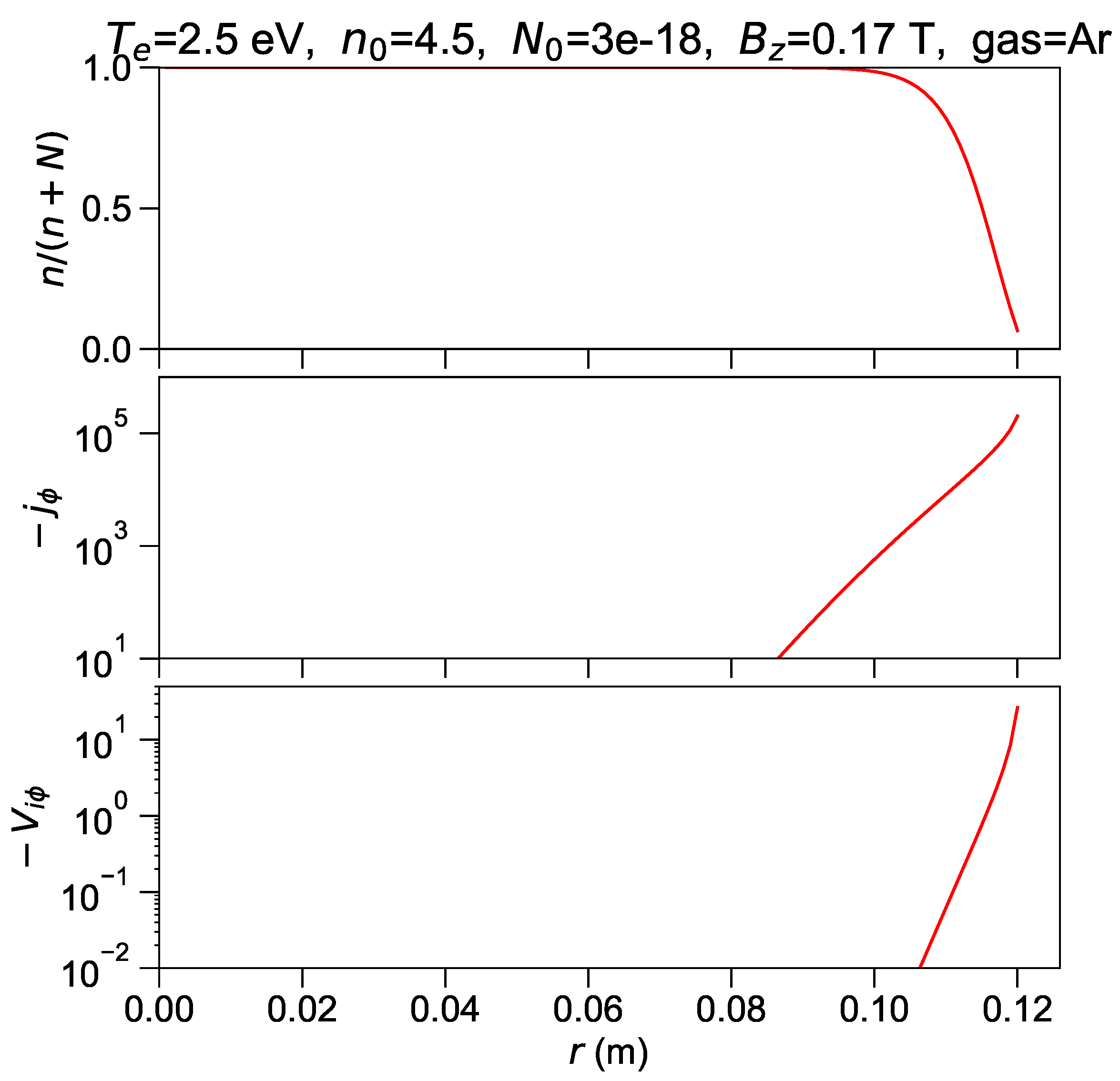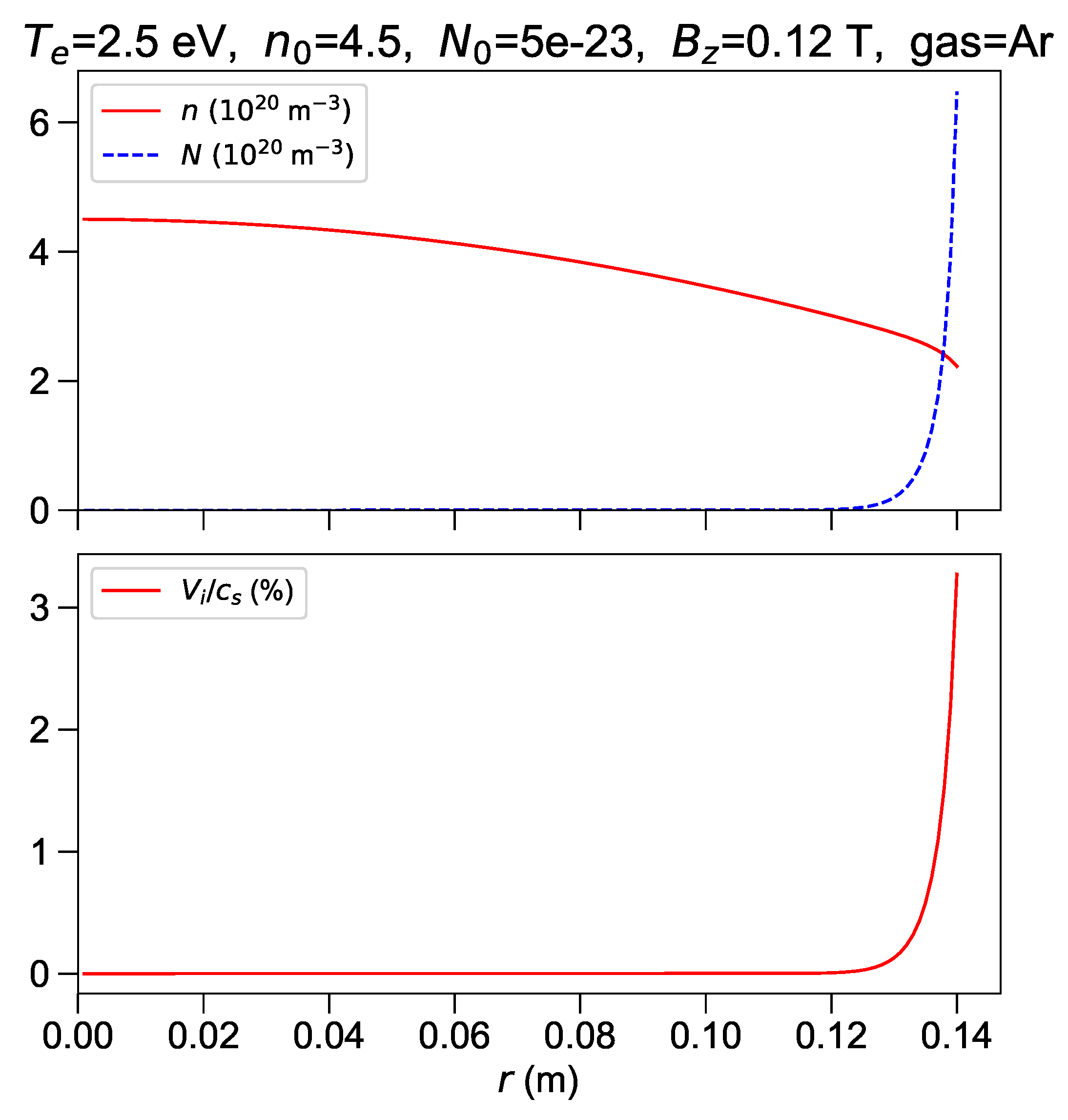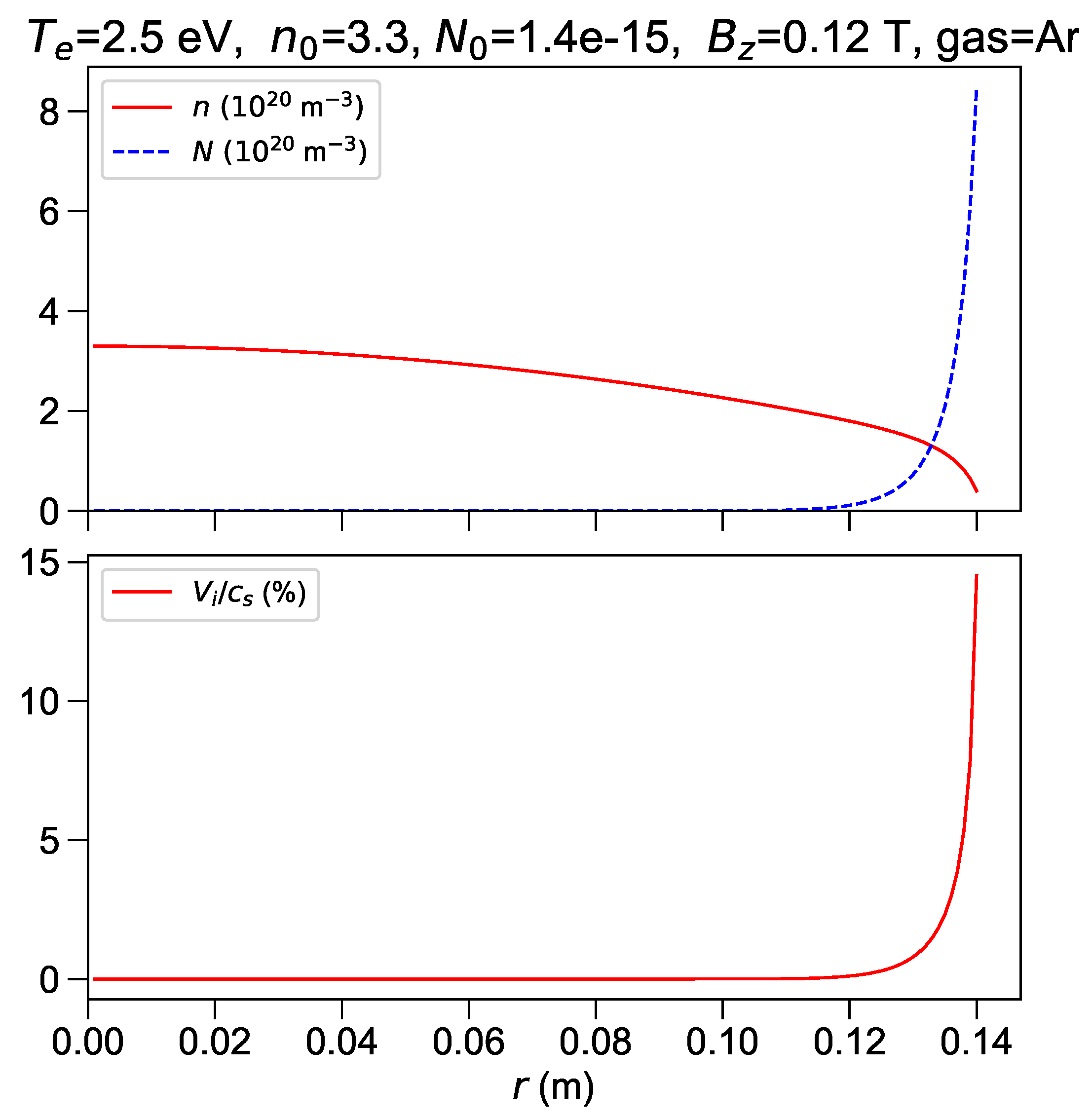Equations (
14)–(
16) are solved numerically employing a standard python ode solver. To avoid the geometric singularity at
, solutions are advanced starting from a slightly off-axis boundary
, with boundary conditions
,
and
. The number density of the surrounding gas is
m
; the boundary condition on central gas density
is adjusted to obtain
slightly below
. The boundary condition on central plasma density
is chosen to reproduce the measured line-average density whenever possible (see next subsection). System parameters are temperature (through
,
and
dependencies), plasma radius (being the pinch force coefficient
), plasma current (being
) and axial magnetic field (being
). Plasma current is fixed at
kA. Different values of temperature, plasma radius, and plasma density are considered in the following. Values of the parameters for each case, including the dimensionless ones used in Equations (
17)–(
19) are listed in
Table 2.
3.1. Dependence on Temperature
The plasma radius varies along the pinch axis from 0.27 m to 0.065 and the external magnetic field varies from 0.02 T to 0.6 T; intermediate values of m and T are assumed in this subsection. The character of solutions changes dramatically with temperature; temperature values are chosen in the range 1.0–2.5 eV, which is adequate to capture the different possible regimes.
For
eV, the minimum possible
, corresponding to
has been assumed. The resulting neutrals density varies by less than 20 % across the plasma radius, while the radial profile of plasma density has nearly parabolic shape (
Figure 3). The ion radial velocity tends to diverge towards the edge while its value is only
times the sonic limit. The reason is the small
n at denominator in the first term at the RHS of Equation (
14), which arises from finite ion radial flux
required in steady state to drain fresh ions produced by ionization. The line-average density is 4.7 ×
m
, i.e., about 20% above the measured value. Lower densities give rise to physically unacceptable solutions as, at this low temperature, plasma pressure becomes insufficient to balance the pinch force and then density decreases to zero inside the simulation domain. The estimated axial electric field
is 235 V/m in this case, much higher than the experimental value of about 50 V/m.
For
eV, there is sufficient room to decrease
and match the experimental line-average density; the chosen value
m
corresponds to
. At this temperature, neutrals density varies by almost two orders of magnitude from the plasma center to the edge, while the plasma density profile remains parabolic with low edge value (
Figure 4). The line-average density fulfills the experimental constraint in this case. Radial velocity tends to diverge towards the edge; the reason is the same as in the 1.0 eV case. The axial electric field is 128 V/m, still substantially higher than the experimental estimate.
For
eV the experimental density is matched with
m
, which corresponds to
. The neutrals density is very small across most of the plasma, and steeply increases in an outer shell (
Figure 5). The plasma density profile is flatter than a parabola and the edge value becomes significant. The axial electric field is 83 V/m. Radial velocity steeply increases towards the edge; the reason in this case is not a small denominator but it is the cumulative effect of the source term proportional to neutrals density, as discussed at the end of
Section 2.4. Very low
is required in this case because the radial growth of neutrals density is steep at this temperature, and with larger
the sonic singularity would occur in the simulation domain. The slope of
keeps increasing with radius, so the profile cannot smoothly match the outer gas density
; this matching must occur in the scrape-off layer, where field lines intercept coils protections and the radial plasma flow
decreases because plasma escapes in the axial direction and recombines at solid surfaces. The scrape-off layer is outside the scope of the present analysis, as discussed above. Profiles at higher temperature are qualitatively similar to the 2.0 eV case, but with flatter plasma density and steeper increase of neutrals density in the outer shell. Results at
eV are shown in
Figure 6. The estimated axial electric field is 60 V/m in this case, in reasonable agreement with the experimental estimate.
The dramatic change of profiles at eV (far below the 15.76 eV first ionization energy of Ar) is due to reduced neutrals penetration depth. Neutrals penetration is pushed by external gas pressure and contrasted by collisions with outgoing ion flux, which in turn depends on ionization.
The normalized neutrals penetration depth
can be estimated from (
1) and (
19). In dimensionless variables the former reads
Keeping only terms that according to numerical results, are dominant at the plasma edge, in particular the second term at the RHS of (
19), one obtains
or
The depth decreases with temperature as strongly increases. At eV, , i.e., there is substantial neutrals density throughout the plasma radius, in agreement with simulations. At 1.5, 2.0 and 2.5 eV one finds 0.51, 0.01 and 0.004, respectively. The last two values are in fair agreement with the relative width across which neutrals density increases from 20 % to 100 % of the edge value. Uniform neutrals temperature has been assumed for simplicity in the model; if neutrals temperature increases inside the plasma, then is to be interpreted as a scale of pressure variation and the scale of density variation becomes even shorter than .
Results on degree of ionization, azimuthal current density from (
8) and azimuthal ion velocity from (
9) are shown in
Figure 7 for the lowest temperature case and in
Figure 8 for the highest temperature case. The degree of ionization in the plasma core is 40 % at
eV and 100 % at
eV, while absolute values of self-generated azimuthal current density and velocity increase substantially at higher temperature.
3.2. Dependence on Plasma Radius and Density
Substantially different profiles are found when changing the plasma radius. Profiles obtained with
m (and
scaled to preserve magnetic flux) are shown in
Figure 9. The ratio between edge and central plasma density (or pressure) is 0.5 in this case, whereas a lower value of 0.14 has been found in the simulation with
m (
Figure 6). Broadening of density profiles with increasing
R is due to lower current density and then to weaker pinch force, total current being fixed. Lower edge density is recovered in simulations at lower central density (
instead of
), as shown in
Figure 10. The edge density depends non-linearly on central density, and no acceptable solutions are found (at the chosen radius and temperature) for
m
.
Consideration of different plasma radii reveals an issue for any future 2D analysis. Envisaging simulations shown in
Figure 6 and
Figure 9 as representative of different cross sections at different
z of the actual pinch, it follows that pressure cannot be constant along field lines, in fact, if it is constant along the field line at the plasma center, then it changes along the field line running at the plasma edge. The reason is that from (
13), the pinch force decreases with increasing plasma cross-section. Constant edge density at constant axial density can be restored in the presence of significant azimuthal current density throughout the plasma and not only in the outer region. Driving such current against resistive drag requires radial current
, which would be acceptable in 2-D since zero divergence can be preserved by variations of the axial current along
z.
However, pressure variations along magnetic field lines remain a relevant issue, in fact the core plasma pressure has to build-up somewhere between the electrodes and the core region. Collisions with neutrals can give at most the pressure of the surrounding gas, which is smaller than the core plasma pressure. Other possible reasons of pressure variation along field lines are pressure anisotropy, inertial forces, and electrostatic forces. The second reason has been invoked in [
12] for plasmas with similar local parameters but far from steady state. Electrostatic forces are likely dominant in axial pressure variation close to electrodes. The role of convective inertia and of charge separation will be investigated in future work.

